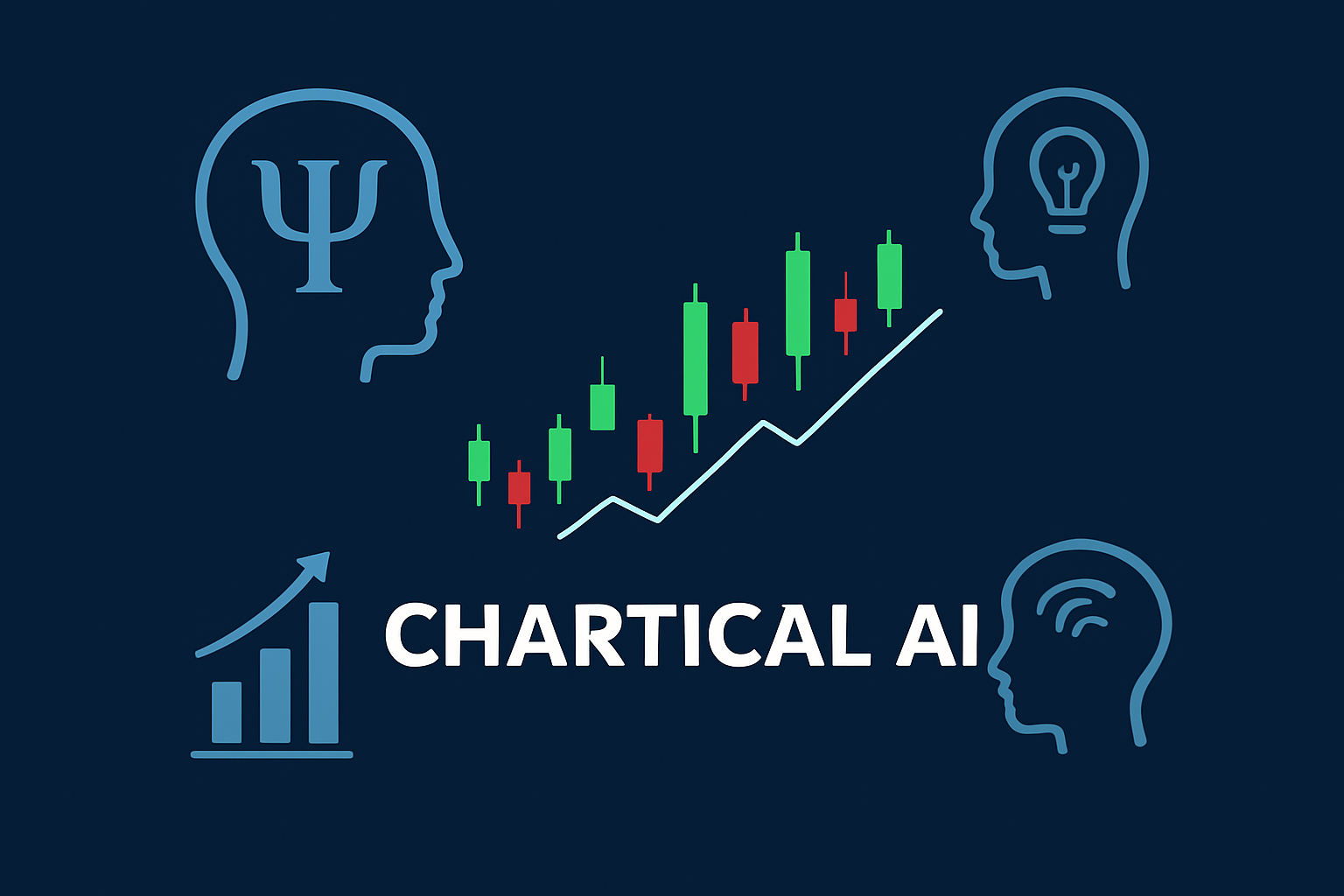
Trading Psychology After Profits: How to Avoid Overconfidence and Sustain Success with Chartical AI
Introduction
One of the most fascinating yet dangerous stages in trading is not after losses—but after profits. Many traders believe that profits automatically bring peace, stability, and progress. However, psychology shows the opposite: after profits, emotions like overconfidence, greed, and carelessness can push traders into riskier decisions, often leading to devastating losses.
Understanding trading psychology after profits is essential for anyone who wants consistent success in financial markets. In this article, we’ll explore why traders behave differently after winning trades, what mental traps arise, and how Chartical’s AI-powered tools can help maintain discipline, balance, and steady profits.

Why Profits Can Be Dangerous
When traders experience gains, their brain releases dopamine—the same neurotransmitter triggered by rewards, gambling, or addictive behaviors. This chemical response creates a false sense of invincibility. Traders start believing that their decisions are flawless and that the market will continue rewarding them.
Some common psychological effects after profits include:
- Overconfidence Bias
After several successful trades, traders tend to believe they have mastered the market. They ignore risks, increase position sizes, and reduce caution. - Greed and the Illusion of Easy Money
Success convinces traders that quick profits are always available. This leads to impulsive trading, overtrading, and chasing every market move. - Neglecting Strategy and Rules
After winning, traders sometimes think rules no longer apply to them. Stop-loss orders are ignored, and risk management gets weaker. - Euphoria and Loss of Objectivity
The emotional high from profit can distort judgment, making it harder to analyze the market rationally.
In short: the period after profits is when many traders unknowingly set themselves up for future losses.
Real-Life Example
Imagine a trader who starts with $5,000 and makes $1,000 profit in a week. Instead of sticking to their strategy, they suddenly double their position size, convinced they’re “on a winning streak.” A single bad trade wipes out not just the profit—but part of their initial capital.
This is not a rare story; it happens daily in financial markets. The root cause? Psychology.
Chartical AI: A Solution to Post-Profit Behavioral Biases
The key to sustainable trading success is discipline and data-driven decision-making. This is where Chartical’s AI-powered tools become invaluable. By using artificial intelligence, Chartical helps traders overcome the emotional biases that follow profitable trades.
Here’s how:
1. Emotional Monitoring with AI Alerts
Chartical detects patterns of overtrading or risk-taking after profits. If a trader suddenly increases position size or deviates from strategy, the system generates an AI alert, reminding them to stay disciplined.
2. Risk Management Automation
With Chartical, risk per trade can be automatically calculated and adjusted based on capital and recent performance. This prevents traders from impulsively risking too much after a winning streak.
3. Behavioral Analytics Dashboard
Chartical tracks psychological tendencies, such as whether a trader tends to overtrade after profits. The dashboard provides insights, turning emotions into measurable data.
4. Future-Proof Fundamental Analysis
Instead of relying solely on emotional instincts after profits, traders can use Chartical’s AI-driven fundamental analysis to make informed decisions about forex, gold, or oil. This reduces impulsive trades and ensures consistency.
5. Scenario Simulation
Chartical allows traders to test what would happen if they continued trading aggressively after profits. By simulating scenarios, traders see the risks of overconfidence—without losing real money.
Practical Strategies to Control Post-Profit Behavior
While Chartical provides powerful AI tools, traders must also adopt practical psychological strategies:
- Take a Break After Big Wins
Stepping away from the screen after profits helps neutralize euphoria and restores objectivity. - Stick to Pre-Defined Rules
Always have a trading plan with fixed risk per trade, maximum daily loss, and maximum daily profit. Chartical can automatically enforce these rules. - Journal Emotional States
Use Chartical’s performance tracking to note emotional states after profits. This creates awareness of destructive patterns. - Treat Every Trade as Independent
A previous win should not justify larger risk on the next trade. Each trade must be based solely on market analysis, not emotions. - Use Chartical’s AI Forecasting
Instead of chasing trades emotionally, rely on AI-powered market forecasts to guide decisions objectively.
The Role of Chartical in Building Long-Term Discipline
The difference between professional and amateur traders lies in consistency. Professionals know that one profitable day means nothing without long-term sustainability. Chartical acts as a digital trading psychologist, providing:
- Accountability – reminding traders of risk rules
- Emotional balance – through alerts and dashboards
- Data-driven confidence – by showing statistical probabilities instead of emotional impulses
By combining psychology and AI, Chartical ensures that traders don’t fall into the classic trap of losing more after winning.
Conclusion
Profits in trading are a double-edged sword: while they can boost confidence, they also increase the risk of overconfidence, greed, and poor decision-making. Without discipline, post-profit trading often ends in losses.
The solution lies in combining psychological awareness with technological support. Chartical’s AI-powered tools act as a safeguard against emotional pitfalls, providing traders with alerts, automated risk controls, behavioral insights, and objective market analysis.
In today’s fast-moving markets, success is not about winning once—it’s about winning consistently. And that consistency comes when traders manage their psychology, especially after profits.
With Chartical, you can transform post-profit risks into long-term opportunities, ensuring that every win becomes a stepping stone toward sustainable growth.























































































